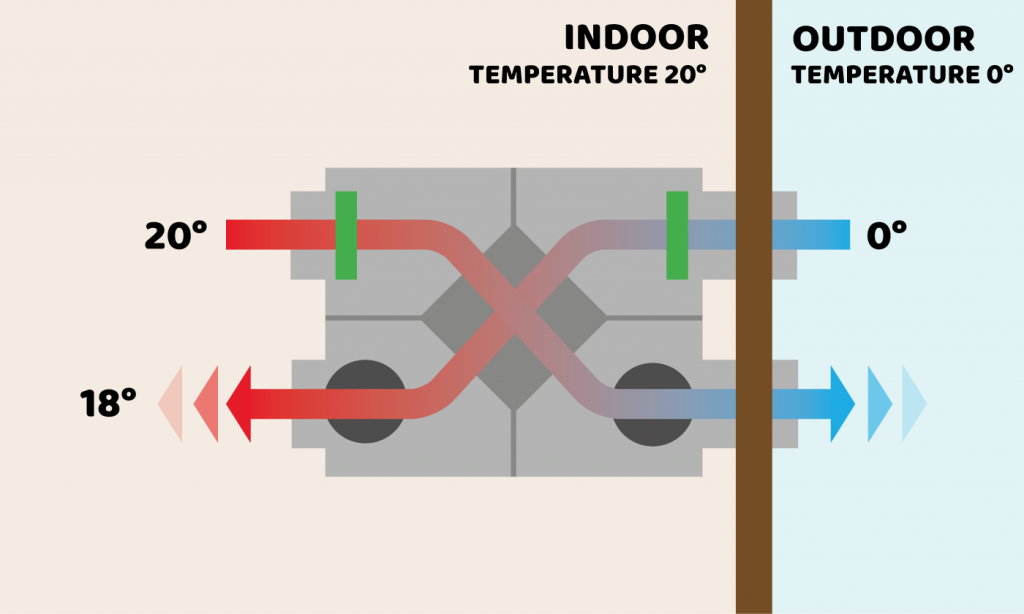Checking out the Perks of Heat Recovery Ventilation for Power Effectiveness in Houses
Heat Recovery Ventilation (HRV) systems supply homeowners a sensible method to enhancing power performance. By recovering heat from outbound air, these systems can significantly reduce home heating and cooling prices. Furthermore, they provide a consistent supply of fresh air, enhancing indoor air high quality and convenience degrees. As homeowners take into consideration sustainable alternatives, understanding the subtleties of HRV systems comes to be progressively crucial. What factors should one assess before making such an investment?
Recognizing Heat Recovery Ventilation Systems

How HRV Enhances Indoor Air Top Quality

Power Savings: The Financial Benefits of HRV
Maximizing energy performance, heat recovery ventilation (HRV) systems offer substantial monetary benefits for house owners. By recovering and reusing warm from exhaust air, HRVs substantially lower heating look at here & cooling costs. This innovation can cause energy cost savings of up to 30%, depending on environment and usage patterns. Homeowners commonly see decreased utility expenses quickly after setup, making HRVs a financially wise investment with time. In addition, numerous regions provide motivations or refunds for energy-efficient upgrades, better boosting the financial allure. As energy costs remain to increase, the cost-effectiveness of HRVs becomes progressively clear. On the whole, the consolidation of HRV systems not only promotes energy performance however also adds to long-lasting financial savings for houses.
The Ecological Influence of Heat Recovery Ventilation
A substantial environmental benefit of heat recovery ventilation (HRV) systems lies in their capacity to decrease total power consumption. By recovering heat from exhaust air and moving it to inbound fresh air, HRV systems minimize the requirement for energy-intensive home heating and cooling down methods. This reduction in power demand adds to reduce greenhouse gas exhausts, as less fossil fuel is required to preserve comfy interior temperatures. Furthermore, HRV systems boost interior air quality by effectively exchanging stagnant air with fresh outdoor air, decreasing reliance on mechanical cooling systems that can hurt the atmosphere. On the whole, the execution of HRV systems supports sustainable living methods and lines up with international More Bonuses efforts to combat environment adjustment by advertising energy performance in property setups.
Selecting the Right HRV System for Your Home
How can home owners guarantee they choose the best heat recovery ventilation (HRV) system for their needs? First, they should evaluate their home's size and format, as these factors influence airflow demands. Next, examining the system's efficiency ratings is vital, as greater rankings show far better efficiency and energy savings. Homeowners ought to additionally take into consideration setup and upkeep costs, comparing different brands and designs for value. Additionally, it is essential to review noise degrees, as some systems operate even more silently than others. Consulting with cooling and heating experts can give tailored recommendations based upon particular home problems. Checking out individual evaluations and service warranties can aid in making an educated choice, making certain that the selected HRV system efficiently improves interior air quality and energy efficiency.
Often Asked Questions

Exactly how Frequently Should I Tidy or Keep My HRV System?
The frequency of cleansing or maintaining a warmth recuperation ventilation (HRV) system usually depends upon usage and environmental aspects. Generally, it is a good idea to do maintenance every six months to assure peak performance and air quality.

Can HRV Solutions Help In Reducing Humidity Levels Inside Your Home?
HRV systems can properly reduce interior humidity levels by exchanging stagnant, damp air with fresh, drier air from outside. HRV Heat Recovery Ventilation. This process helps keep a well balanced interior environment, enhancing comfort and protecting against moisture-related problems
What Is the Lifespan of a Common HRV System?
The life-span see page of a common heat recovery ventilation (HRV) system varies, typically lasting in between 10 to 15 years. Routine maintenance can prolong its efficiency and functional life, guaranteeing peak performance throughout its usage period.
Are There Any Sound Worry About HRV Systems?
Sound interest in HRV systems can develop, especially from fan operation. Several contemporary systems are created to reduce sound levels, guaranteeing they operate silently while maintaining performance, which attends to possible disturbances in living atmospheres.
Can I Mount an HRV System Myself, or Do I Required a Specialist?
The specific contemplated whether to install the heat recovery ventilation (HRV) system personally or work with a specialist. Generally, while do it yourself installation is possible, know-how assurances proper performance and compliance with local building regulations, boosting system performance.